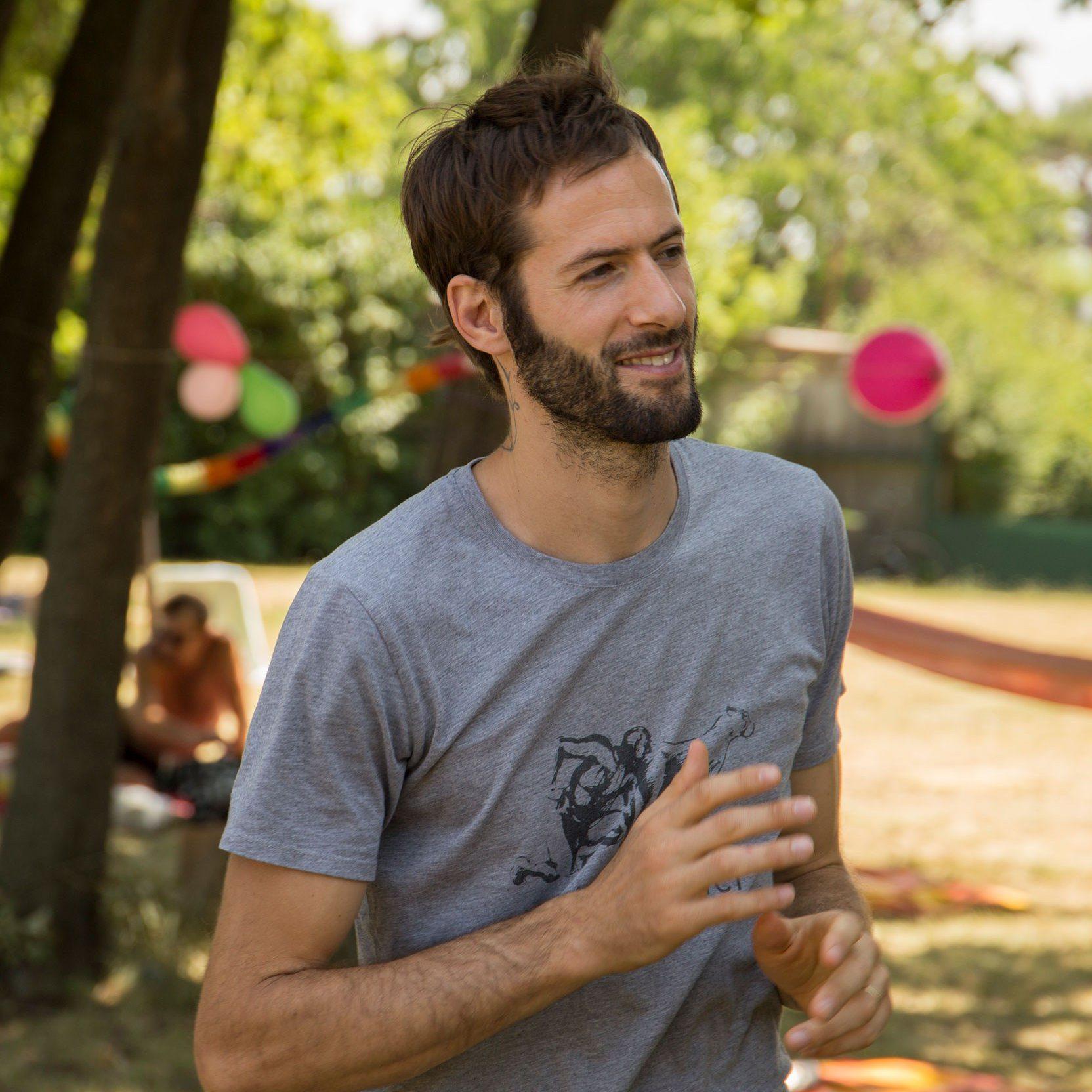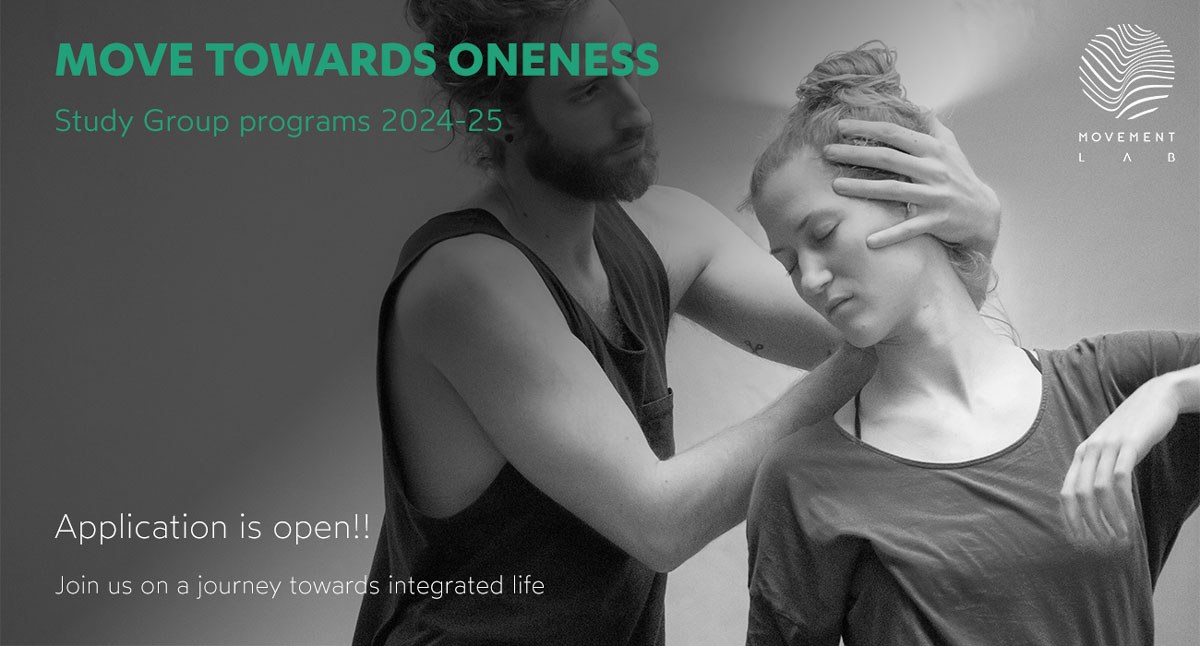Tripping with my dancing body
 by Matan Levkowich
by Matan LevkowichIt has been a long time since I shared my dance moves online. I have embraced the intimacy of the studio and allowed myself to continue to question what role dance plays in my life and how it affects the way I understand myself and others.
Over the past 6 months I have been exploring with my students how dance can open doors to different dimensions, different states of consciousness and different ways of connecting with each other. This research has been influenced by my own experiences with psychedelics as well as my students' interpretations of my ideas. In this short essay, I would like to explore the work I have done with them and share some basic principles for those who may be interested in the subject, both theoretically and practically.
Before delving into the research itself, I would like to share some background stories that might set the stage for what follows.
Beginning in 2020, I had the opportunity to participate in a series of psychedelic ceremonies in which I was deeply affected by several experiences of lack of agency over my body. I have a vivid memory of one experience in particular - it was a cold evening in November, the whole group and I were sitting around the campfire, two people were chanting a prayer in a repetitive way. I was sitting on the floor and I saw myself slowly slipping, losing control of my body... I began to move on the floor in what could be described as animal-like movements, my head was heavy and kept falling into the group as if it were glued to it. Waves of muscle tension ran through my spine, forcing me to arch and curl it. I was rolling and shaking, I was crying, I was fading. And throughout this experience I felt as if I had zero control nor the ability to stop it.
I know that for some it might sound scary or even disgusting to read such a description. But for me the experience was not at all like that. As I went through the experience, a part of me went into a deep relaxation. As if, by letting my body speak freely, I could finally let go of the exhausting effort of maintaining control. As if this temporary loss of control was my body's way of freeing itself from the constraints of its domestication. And with this relaxation came a deep state of connectedness.
And in this state I could experience the direct effect I have on everything. As nothing was separate, each action was like a wave travelling through space, affecting everything on its path. From my breath to my voice to my moving body. Everything mattered. And in this state I was floating in space, resting above the clouds, witnessing the universe, witnessing time, merging into the mystery of life...
After these experiences I had to question my dance practice again. In particular, to question the subtle dialogue between cultivating control over the body and developing comfort in losing control while dancing. I was motivated to discover to what extent I could use dance as a substance for tripping. To what extent could I allow my dancing body to open doors for such experiences?
In the context of ensemble work in dance, the notion of connection is typically understood as a heightened sense of awareness of group composition. In all my previous experiences with other teachers and choreographers, dance was the end, not the means. For example, if two or more dancers were moving in a common rhythm or quality of movement, the dance would appear to be connected. And if you go down that road, you can work that skill to perfection and a group of dancers can look very connected. But that doesn't necessarily mean anything at the level of consciousness. Dancers in such a choreographic score would probably end up in a 'doing' state of mind, performing tasks, and that wouldn't lead to the expansion of consciousness that I was experiencing.
I needed to take a different approach to group improvisation, and to do that I needed to draw a clear line around what we don't do, to put certain ways of working outside of our practice, to have my 'no' manifesto:
- Dance shouldn't be treated as an end goal.
- Compositional connection isn't the objective.
- We are not trying to create meaning or tell a story.
- We are not commenting on any political issue.
- Representation takes us away from our path.
Within our new boundary we treat dance as a practice, a ritual that allows us to explore the relationship between embodiment, presence and connectedness. As a starting point, we have mapped the different paths we can take to generate a shift in perception of 'self' and loosen the grip of our self-identity.
We have experimented with different tools to begin to slide into this 'altered' state. Here are some of the tools we used:
- Sharp changes in the speed of our movements
- Rapid changes along the entire spectrum of muscle tone
- Rapid shifts in the focus of the eyes - from very close to the body to very far out in space
- Unifying and deconstructing the body and its various parts
In the video below you can see a short demo of my own interpretation of the practice:
All these tasks may seem rather random. But after a conversation with my colleague Daphna Horenczyk (who has been working on similar themes for several years), she pointed out to me that all the tasks are governed by a single principle - they force us to move in such unfamiliar ways that it 'shakes' the system in such a way that the sense of agency over the body begins to dissolve, similar to what I have described in my own experiences with psychedelics. And when this happens, a 'crack' in our perception of reality allows us to slip into our 'dance trip'.
Another important aspect of our practice was to construct some guidelines for our interaction with each other. As we were always 'tripping' in a group setting, communication was inevitable, and in such altered states of consciousness the 'normal' social codes were not always the most reliable tool.
Here are some of the new baselines that served us within the new landscape:
- The group is a holarchic structure in which each individual is part and whole at the same time.
- We are interconnected, whether we experience ourselves as such or not.
- The journey is a shared experience. We do it together and leave no one behind.
- There is no need to 'know' what we are doing, but the feeling of 'knowing' may arise.
- Both 'knowing' and 'not knowing' coexist within us, harmoniously and paradoxically.
- With good intentions, we run the risk of being misunderstood by others.
- Our different expectations of each other may be conflicting. We embrace this.
- We avoid constructing a hierarchy of values around the different experiences we have.
- We ask ourselves each time what we are willing to sacrifice for the process.
The final element needed for our practice was a clear framework. Such experiences need to be placed within clear boundaries, so we needed a clear beginning and a clear end. For this I took inspiration from various psychedelic stages and constructed the following simple structure -
- Entry - where we actively begin to mess with our perception of reality.
- The Main Journey - where everything is possible and our different interpretations are expressed.
- Landing - a gradual return to our normal consciousness and the re-introduction of our everyday selves.
What I witnessed in our sessions moved me deeply. My dancers have engaged so deeply in our practice that I have seen them enter into a state of interconnectedness. And not only was it very emotional for me to witness this, but they managed to draw me into it to the extent that I was experiencing it with them and not just watching them perform.
We have taken some important steps and will be presenting this work publicly on 27-29 June. But it is really just the beginning of something much bigger that I believe will become much more central to the contemporary dance discourse. It has given me some answers, but more importantly it has led me to ask many more questions that will keep me coming back to the studio, back to research. And I hope it will inspire others to dive into this great mystery that lies within our bodies and minds.
Join our community online!
Did you enjoy this article? Don't miss the next one!
Subscribe to our newsletter and we'll deliver the next article directly to your inbox.
If you wish, we'll include you when announcing special events and online courses.
